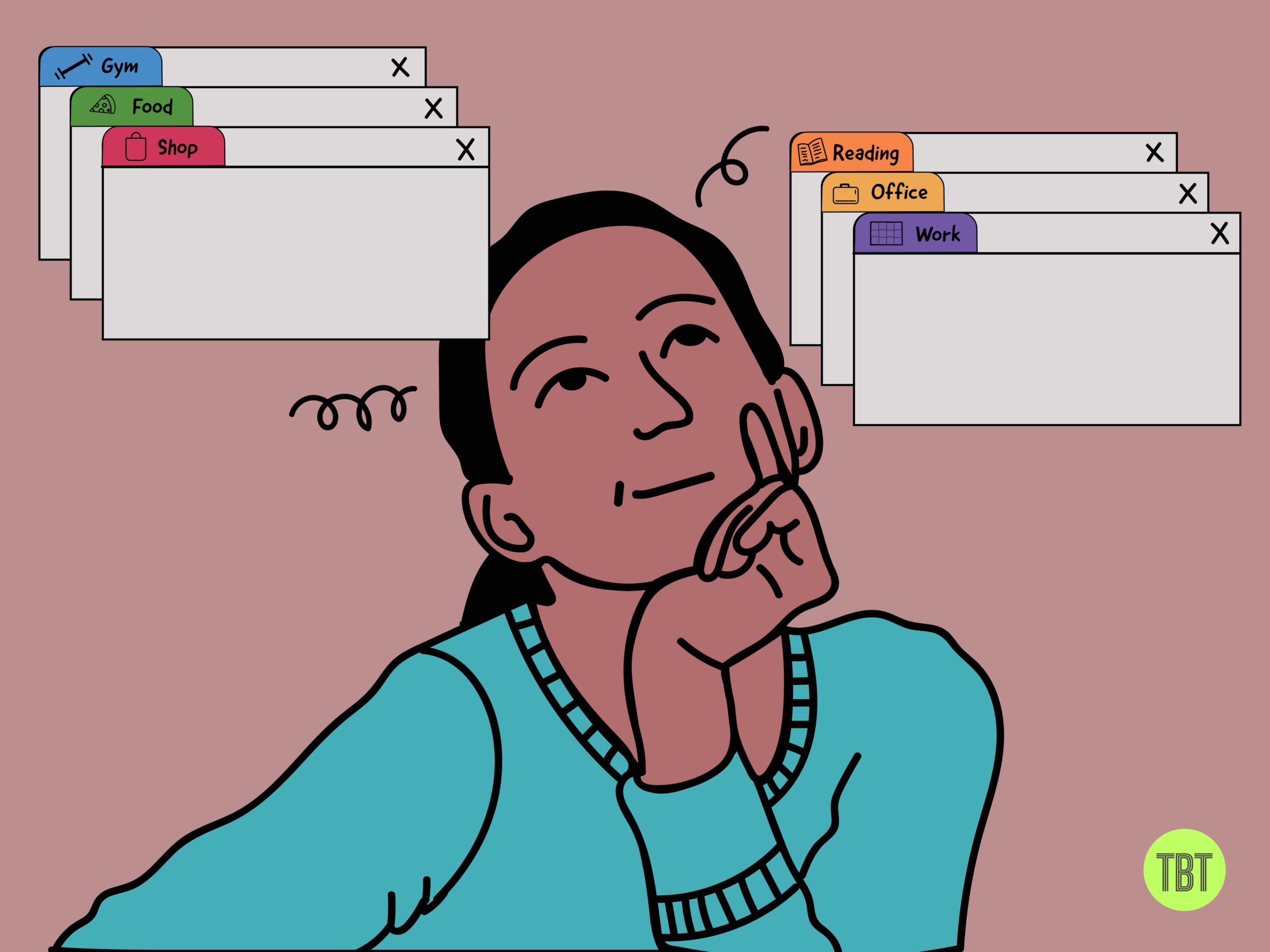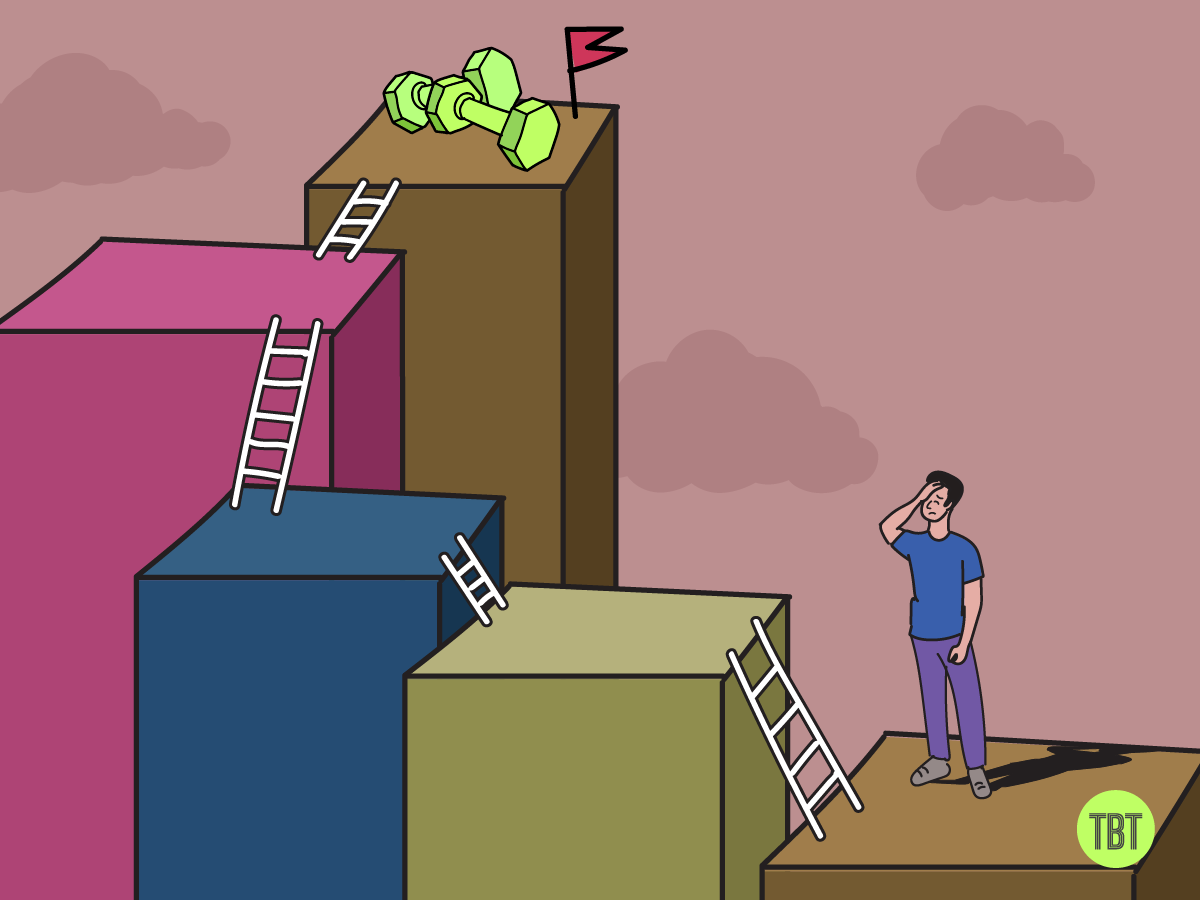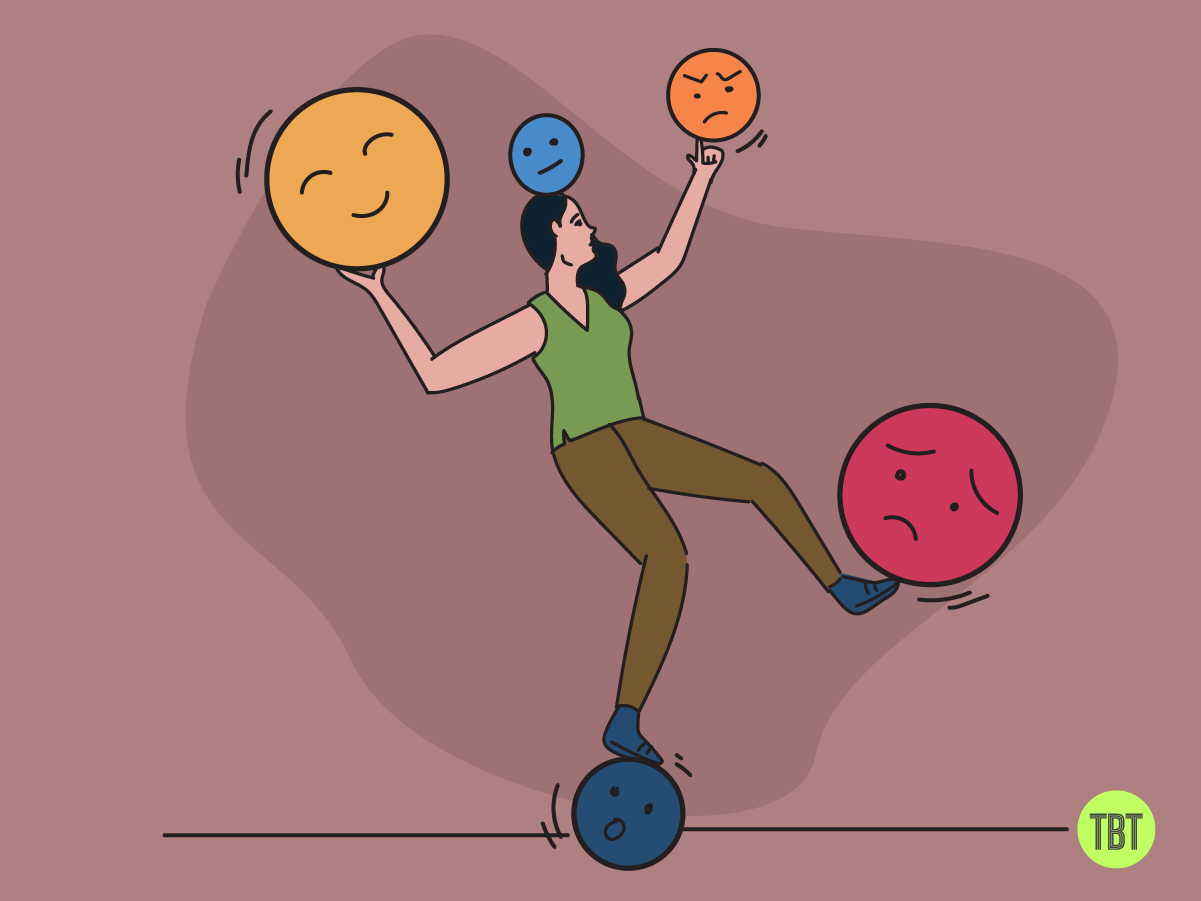How to manage fitness as an adult with ADHD
The most trustworthy source of food and
fitness journalism in the country.
Editor’s note: On 19th August, I offered my tips on building a consistent exercise routine. Within an hour of publishing, Yashi Gupta, a regular reader, quickly called out what I’d missed: my advice didn’t consider challenges unique to conditions like ADHD—think focus issues and time management.
Yashi was spot on—my article had failed to address these nuances. I asked her if she’d be up for writing about her own experiences and ideas to help those who face these extra challenges, and I am so glad to publish her brilliant piece today. (Readers becoming contributors—how great is that?)
Yashi turned 25 this week and is a product manager in training who loves books, stars, and nature. A belated happy birthday from all of us at TBT! (For more, you can reach her at 25thyashi@gmail.com.)
—Samarth Bansal
Like most people, I struggle with maintaining an exercise routine. I’ve tried both psychological and behavioural tricks to get myself out of bed every morning and work out.
So when I saw TBT’s email with an enticing subject line, ‘Strugggling to exercise?’, I read. In there, Samarth, this newsletter’s Editor, shared his tips for building a routine. His advice included: don’t aim for perfection—just do something; willpower and motivation are overrated, so focus on automating your behaviour; make it the first task of your day, among other things
But as I neared the end, I realised—all over again—the significance of the phrase: been there, done that.
Last year, I joined the gym, even though I’m stingy. I paid for the membership, convinced that I wouldn’t want to waste money. Well, it turns out I underestimated myself.
Joining the gym for the first time was a novel experience. It was going fine for about 20 days or so. Then, I started struggling: not getting out of bed, eyeing the workout gear, and making up excuses.
When I recognised the pattern, I deployed every strategy in the book—literally. I even bought James Clear’s bestselling ‘Atomic Habits’ and created a system. I tried accountability partners, rewards, and even braved my mother’s taunts. None of it worked. Everything fizzled out in exactly five days.
One morning, I reluctantly got up and left for the gym. But, once I reached, I stared at the door. For 15 minutes. Then, I turned around and spent the time hiding out in a park, telling myself I needed some flower photographs. Another time, I didn’t even leave the parking lot; I spent the entire hour right there. And another time—yes, it happened again—I was roaming around the block, feeling numb, guilty, and frankly, much too irritated with myself.
The worst part is realising habit-building strategies are working for others. So I can’t even pronounce them bullshit.
My problems were not just confined to skipping gym sessions; they seeped into other aspects of my life, especially work. I’d open the laptop and then just sit and stare at it.
I thought I was lazy, procrastinating. That’s what we’re conditioned to believe, right? That we just need to try a little harder?

People with ADHD may have trouble paying attention.
Then came the twist. An almost stranger, after hearing my passionate recounting of my struggles, simply asked, “Could you have ADHD?”
ADHD, or Attention Deficit and Hyperactivity Disorder, was a condition I had skimmed over a year ago. But now, this prompt offered me a new direction to explore.
I Googled. And then promptly lost track of what I was doing. Attention deficit, you see. But I eventually did manage to focus, leading to a tiny ray of hope and an intense Google search session. This led me to consult a clinical psychologist, and here I am now, armed with an official diagnosis of adult ADHD.
I learnt that it’s a neurodevelopmental condition—a term that, admittedly, can sound intimidating. In simpler terms, it’s a condition that affects the development and functioning of the brain. It often originates in childhood and can persist into adulthood, impacting key areas like attention, memory, and impulse control.
Why does this matter? For those like me, who’ve tried every trick in the book to no avail, understanding ADHD could be the missing piece of the puzzle. And for those who’ve never encountered these struggles, understanding ADHD offers a lens into why conventional strategies may not work for everyone—and, maybe, help you understand some of your friends better.
Why do we struggle?
Now that we have some context, let’s delve into the nitty-gritty. Why don’t conventional habit-building strategies work for people with ADHD?
I’ll dissect three top strategies from Samarth’s piece to explain.
1. Automating behaviour is easier said than done
I get it: take away the choice; stack habits; keep your workout gear close and gadgets away; make rules, not decisions. These are all sound pieces of advice.
Not making decisions helps, but sticking to rules? That’s another story.
One of the symptoms of ADHD is difficulty initiating tasks, which is often referred to as ADHD paralysis or executive dysfunction. In simpler terms, our brain structure complicates our ability to control emotions, memory, motivation, planning, and problem-solving.
This makes it a herculean task for me to motivate myself to start, complete, or sustain activities. It’s also hard to transition from the state of rest to action, because everything is so effing overwhelming.
I’ll paint a picture for you: I’m eyeing the workout gear and want to go to the gym. But I can’t get out of bed. Why? Executive dysfunction.
Why am I overwhelmed? Going to the gym involves an exact sequence of tasks — getting out of bed, drinking water, brushing teeth, washing my face, changing clothes, grabbing my phone and headphones, putting on socks and shoes, getting my bike out of the house, and then driving for 10 minutes.
After parking, there’s another sequence: walking down the stairs, greeting my two trainers (and I dislike social greetings), followed by the obligatory small talk during the workout.
And all this needs to happen within a fixed 30-minute timeframe.
For someone without ADHD, these tasks might operate on autopilot. But for a socially anxious and mentally fatigued individual with ADHD, it feels like navigating Mumbai’s local train station at 8 am. So, I turn around and go right back to sleep. I’d rather not be fit.

A simple task can look very diffrent for a person with ADHD
As JohnnyCommunist wrote on a Reddit thread:
“It can be soul crushing. No one without ADHD can understand what it’s like to look at a basket of clean washing and just be completely overwhelmed by it. If you’ve never felt that, I can understand why people without ADHD might use the ‘lazy’ label. I spend more energy motivating myself to do a quarter of the stuff most people do without thinking.”
2. Make exercise the first task of the day. Uh, no.
One thing I love about ADHD is how I’m attracted to novelty. That’s why I was so diligent about going to the gym for 20 days!
I joined an abacus class when I was younger. I excelled for three semesters before losing interest so dramatically that I dropped out. (For someone so stingy, I do have a talent for frittering away money.)
Now, let’s discuss novelty. Cambridge Dictionary defines it as ‘the quality of being new and unusual.’
People with ADHD are often more drawn to novelty than those without the condition. That’s because we typically have lower levels of dopamine, a neurotransmitter involved in regulating rewards, motivation, and mood.
When we encounter something new — like joining a gym — our brain releases more dopamine than usual, giving us a burst of positive emotions and energy. It’s a fleeting moment when we become more focused and attentive.
But here’s the kicker about novelty: nothing stays new for long.
So could I extend my gym membership’s usefulness by switching up my routine and not working out first thing in the morning? Absolutely.
I once thought the remedy to my gym avoidance was to opt for evening classes. While I never followed through, I’m convinced that if I had, I would’ve stuck with it for another two months at least.
When the gym failed, I took up dancing for 30 minutes each day. That lasted three weeks in the morning, and then I switched to evenings for another two weeks. Until I eventually stopped because there aren’t enough Cher or Lizzo songs to pick a new one every day.
🎶Lizzo said, “It’s about damn time”…. you share this article
3. Mindset? Ha!
I dislike the word mindset or rather what it means. A fixed mindset for a dynamic world never made sense. Turns out there’s an ADHD link here:
- Emotion dysregulation: This refers to our inability to effectively manage emotions in response to external stimuli. Our emotional responses tend to be intense, frequent, and long-lasting.
- Impulsivity: This is our knack for acting without adequate forethought or planning, usually propelled by immediate gratification or emotional whims.
Let’s understand this with an example.
I had a list of tasks due for completion by Friday, 8 pm. But I was also feeling lonely, so when a friend called, I gave in. The call lasted for three hours.
I thought of pulling an all-nighter. But I’d already pulled an all-dayer (if that’s not a term, it should be), so I couldn’t stay up past 11. I slept. When I reviewed my to-do list the next day, I felt guilty, ashamed, and regretful.
This is mood regulation and impulsivity in a nutshell.

Mood regulation when you have ADHD can be difficult
We all experience this to some extent, yes. But when combined with other symptoms of ADHD and the frequency of their occurrence, the result is inertia. A recipe for…nothing. When you’re not working, you end up with nothing.
At this point, after all this, do I have the time or bandwidth for…working out? No.
Some might argue that I could still squeeze in 30 minutes for exercise. Which is fair. I can. But here’s another ADHD quirk to consider: time blindness.
According to Dr Hallowell:
“In ADHD, time collapses, making life feel as if everything is happening at once. It’s now or never…or maybe later. This creates panic. One loses perspective and the ability to select what needs to be done first, what needs to be done second, and what can wait. Instead, you are always on the go, leaping before you look, always trying to keep the world from caving in on top of you.”
What can we do differently?
Now you know why the typical playbook doesn’t quite work for us. Some of you might be wondering: ‘Alright, but what’s the game plan then?’
Good question. I had it too, and quite obviously, in dire need of solid answers.
So with this article as my catalyst, I reached out to people who actually know what they’re talking about—experts and fellow sufferers who experience these challenges daily.
And ended up with three key ADHD-friendly strategies. (But a quick note: take these with a pinch of salt, as I haven’t explored these strategies yet.)
Strategy 1: Executive dysfunction
Dr. Sonal Anand, a Mumbai-based psychiatrist, explains that postponing tasks serves as a coping mechanism, allowing us to push away unpleasant feelings. The key, she says, is to “change the way you think about the outcomes of the situation and the way you perceive the cause and effect ratio.”
Just realising you’re doing this—and harming yourself in the long-term—can help you overcome the anxiety.
Simply redirecting the thoughts to things that bring you joy can help you gain better control, she explained. Maybe thinking about what made you smile the other day. Or think how serene the sky is, how sweet the birds’ chirping is, and how would the shades of blue, grey, and orange paint the sky today? (Thinking of the colours of the sky does make me smile every time.)
And once I’ve broken through the anxious thought pattern, I’ve found it’s not as hard to get out of bed.
This tactic is supported by tips I found in a Reddit community. One user, Melodyspeak, pairs tasks they dislike with other sources of dopamine, like playing a Wordle game, which they love. And when the novelty of Wordle wears off, another user (Lesbihun) recommended another NYT game called Connections. There’s no end to this, folks.
I had tried this a year or so ago, but turns out I was going about it the wrong way: I tried doing this with a maths puzzle. Now, let’s be clear, I’m not good at maths, but I want to be. So don’t choose things you want to be good at, choose things you are already good at. Fighting with your siblings, for example. It’ll be easier.
When it comes to workout routines and exercises, I spoke to Dr. Kristin Wilcox for advice. As a mother of an ADHD child and a PhD in pharmacology, she speaks from a unique intersection of expertise and lived experience. Her son enjoys indoor rock climbing, martial arts, and track and field. “Joining a mountain biking club, or a running club may work better for those with ADHD to help then establish an exercise routine,” she said.
📩 If you’re NOT joining a running club, then join the sharing club and share this.
Strategy 2: Novelty seeking
Now, I get it — you’ll get used to Wordle and the running club will get old. What then?
Dr. Russell Ramsay, a retired professor of Clinical Psychology in Psychiatry, suggests introducing novelty into our routines.
Whether it’s taking a yoga class at a different time or changing up the exercise order, a little variety can go a long way. Even going to the same exercise class might be an opportunity to wear different workout clothes or standing in a different location than the last time. You can try out new exercise equipment or have a wild card day when you do something outside the gym, such as a hike or a bike ride.
The key is to find the right strategy, which takes a lot of trial and error—and, of course, patience.
Dr. Wilcox spoke about interest-based engagement. “If my son could turn a boring task into something related to his interest in space travel and exploration, he would have an easier time completing the task,” she told me.
Her observation resonates with me; like her son, I also find space travel fascinating. It’s easy for me to imagine I’m hiking through the gravelly red plains of Mars when I’m simply going up and down the stairs. (What can I say, I’m creative like that.)
Dr. Wilcox also broadens our understanding of what exercise can mean for individuals with ADHD. “Exercise isn’t just about going to the gym, lifting weights, or taking pilates class. Mountain biking, rock climbing, training for a 10K, and kick boxing are types of exercise that may be more appealing to individuals with ADHD,” she said.
Strategy 3: Emotional dysregulation and impulsivity
Dr. Wilcox emphasises the emotional component by stating, “Emotional responses are in response to frustrating situations.”
I can relate to this sentiment, as these emotional upheavals often arise from situations I’ve found myself in—which are always worsened by the fact that I walked myself into this situation.
So how can we know if our actions are impulsive or just a response to what’s happening around us?
Dr. Ramsay offers a pragmatic approach: recognize that you’re not in the mood; and at the same time recognise you don’t have to be in the mood to take the steps to go to the gym.
“Even coaching yourself through the steps to take as you would for a friend (known as distanced self-talk) can help get you going and on track,” he explained.
In essence, treat yourself as you would a friend and take the steps to get into the gym.

Treat yourself like your friend
A better approach, he said, involves pre-identifying situations where you are likely to be impulsive, especially since this is often closely tied to emotional states. Being attuned to your personal cues for impulsivity or overstimulation—such as talking too much or too loud, or being too sensitive or reactive to things going on around you—can help you navigate challenging situations more effectively.
This self-awareness enables you to decide whether you need to take a break for a bit and then re-enter the situation. And this is way better than not doing anything and carrying the feelings of guilt and shame around.
For instance, if you find crowded gyms overstimulating and more likely to be short-tempered, you might choose an exercise that provides you some space, like getting on a treadmill.
Dr. Ramsay advises that when emotions run high, taking a brief pause can be transformative. “Taking a break and doing some stretching or relaxation breathing can allow you to reset and re-enter the situation,” he said.
Ultimately, these suggestions serve as guidelines, much like a recipe. They’ve given me a framework to make things happen, and you’re free to personalise them to your tastes—switch ingredients, add seasoning, make it your own.
If you find the days getting harder or feel you’re navigating this alone, don’t hesitate to seek professional help. If that’s not an option for whatever reason, get a Reddit account. (Or maybe not! :D)
At the end of the day, I’ve come to understand that it’s alright to forgive yourself. Over and over again. I used to think I could forgive myself only so many times—there’s a limit. But then, I also used to think we need protein only once a week. So not everything you think is right: give yourself the chance to start afresh, despite past failures.
And always remember: “Anything that’s worth doing is worth doing poorly.”
Since this is so “novel,” share it 😊
More on Truth be Told
How I built my exercise routine
Allergic to being still: A runner’s diary
Everyone has an opinion on your body. But why?
How to find a good therapist?
Here’s how I got my cholesterol levels down
How I went from 102 kg to 74 kg at 50
How my dad started strength training at 63
I finally started taking care of my body
